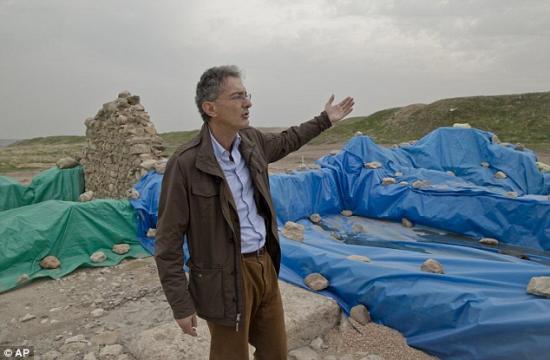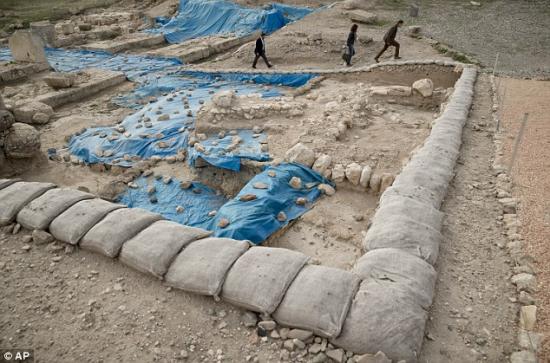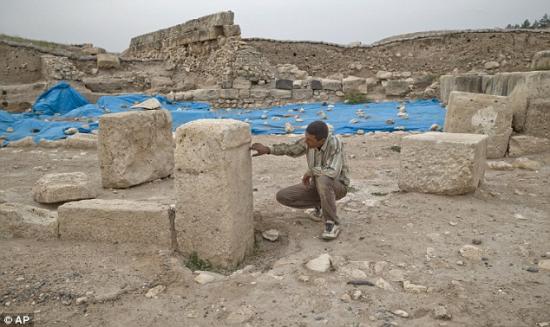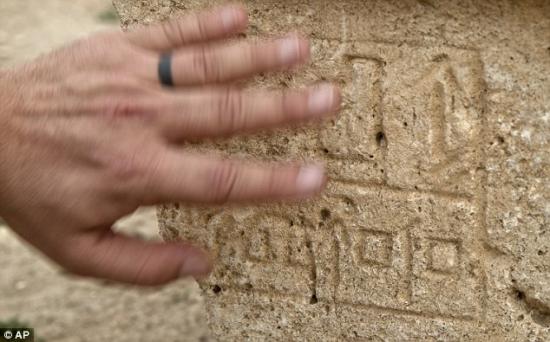Darren Boyle
Source - http://www.dailymail.co.uk/news/article-2836010/Is-dangerous-archaeological-dig-Italian-academics-discover-5-000-year-old-hieroglyphics-ancient-site-just-20-METRES-away-ISIS-territory-Syria.html?ITO=1490&ns_mchannel=rss&ns_campaign=1490
A group of intrepid archaeologists are excavating a 5,000 year old ancient site on the Turkish-Syrian border within sight of the black flag of ISIS.
The Italian researchers are digging in the ancient city of Karkemish, which is close to the Syrian city of Jarablous - which is under the control of the feared terrorist organisation.
Archaeology Professor Nicolo Marchetti, of the University of Bologna said his team has been working as US and coalition aircraft screamed overhead on their way to targeting the Islamic extremists.

Prof Nicolo Marchetti said the site of Karemish is just 20 metres from ISIS controlled territory in Syria
Turkish troops allowed the researchers back onto the site in 2011 for the first time in more than 90 years.
He said: 'Basically we work 20 meters away from the Islamic State-controlled areas.'
Due to the sensitive nature of the location, the area is guarded by more than 500 Turkish soldiers, tanks and it is covered by artillery.
He said: 'Still, we have had no problem at all. ... We work in a military area. It is very well protected.'
The project, which also includes archaeologists from Gaziantep and Istanbul universities, is doing the most extensive excavations at Karkemish in nearly a century, building on the work of British Museum teams that included T.E. Lawrence, the adventurer known as Lawrence of Arabia.
Marchetti said the plan is to open the site to tourists next spring. A concrete barrier, about four meters high, will be installed at the site.
He said: 'This will be a total protection for the tourists.'
The strategic city, its importance long known to scholars because of references in ancient texts, was under the sway of Hittites and other imperial rulers and independent kings.

Turkish authorities allowed researchers access the site in 2011 for the first time in more than 90 years

Almost a century ago, Lawrence of Arabia spent time excavating the historically important site in Turkey

However, archaeological investigation there was halted by World War I.
It was stopped again by hostilities between Turkish nationalists and French colonizers from Syria who built machine gun nests in its defensive walls.
Part of the area was mined in the 1950s, and in later years, creating deadly obstacles to excavation. Demining was completed just a few years ago.
Archaeologists are completing their fourth season unearthing the secrets of Karkemish along the Euphrates.
The name Karkemish means 'Quay of (the god) Kamis,' a deity at the time in northern Syria. Stone monuments decorated with sculptures, hieroglyphics and more than 20 meter-high city walls attest to the influence of the town.
Among this year's finds were sculptures in the palace of King Katuwa, who ruled the area around 900 B.C. There were five large orthostats in limestone and basalt, a dark grey to black rock, that portray row of individuals bearing gifts of gazelle. An orthostate is an upright stone or slab that forms part of a structure.
The archaeologists also found a mosaic floor in the palace of Sargon II, who reigned around 700 B.C. over Assyria, an ancient empire mostly located in Mesopotamia. And the team finished exploration of the ruins of the expedition house of Lawrence of Arabia, who worked at Karkemish between 1911 and 1914.
The team began its project in 2011 around the time that the Syrian uprising against President Bashar Assad was escalating.
PART.2